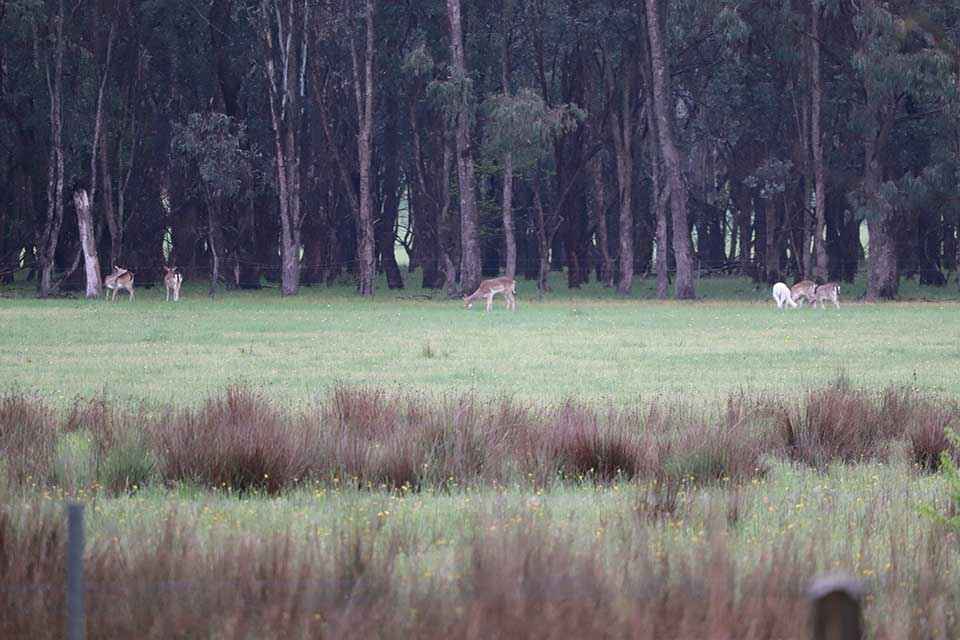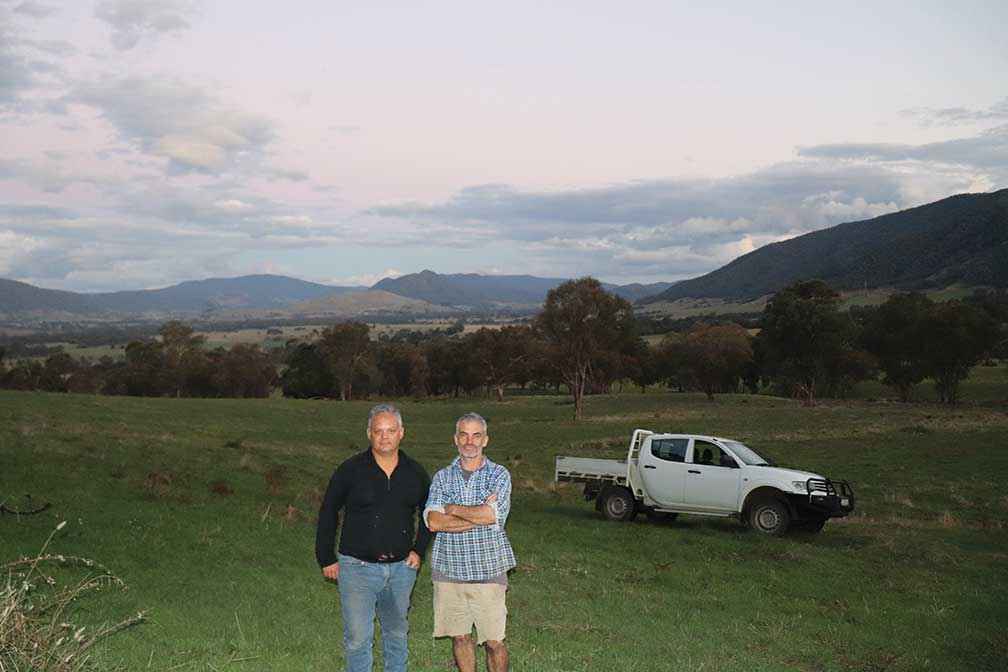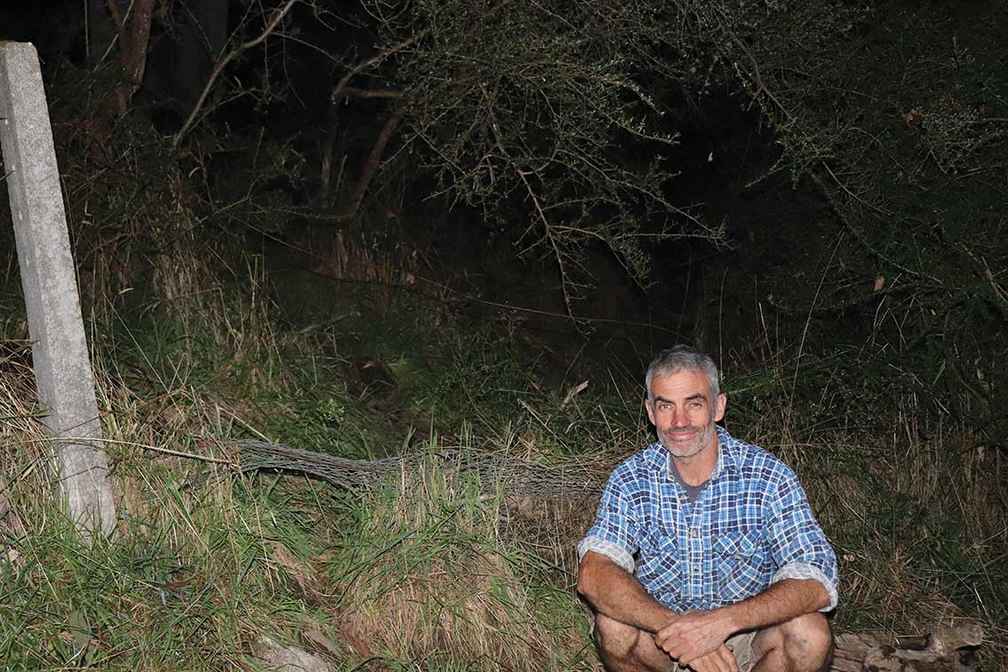Victorian Landcare Magazine - Winter 2021, Issue 81

The deer problem began in Victoria in the late 1880s when several deer species were released by acclimatisation societies which were set up to introduce non-native species to Australia for economic and nostalgic reasons.
In north east Victoria there are now self-sustaining and expanding herds of sambar deer (Cervus rusa), red deer (Cervus elaphus) and fallow deer (Dama dama) with smaller numbers of rusa (Rusa timorenisis) and wapiti/ elk (Cervus canadensis).
The introduction of deer farming enterprises in the 1980s saw red and fallow deer numbers grow. Escapees and deliberate releases also increased.
Deer were once regarded as attractive in the landscape, but they have now reached population levels in some areas where they are impacting on the environment and on farm productivity.
Landholders and public land managers are increasingly faced with making management decisions on how to handle the deer problem.
In 2015 the Mitta Valley Landcare Group (MVLG), with support from the North East CMA, began a deer project driven by local landholder and community concerns. Community engagement and input from State Government agencies, hunting organisations, and Victoria Police helped to set the parameters for the project. We wanted to understand the impact deer were having on landholders and the community, the impact of deer on the environment and the increasing impacts and management of illegal hunting.

Above: From left, Simon Feillafe, Mitta to Murray Landcare Network Facilitator with landholder and member of the Mitta Valley Landcare Group, Ben Teek. Ben has changed his grazing regime to manage deer attracted to his property from the crown land forest on his boundary.
Over the next four years MVLG held four deer forums. The first two were focused on community engagement and gathering information from relevant experts to build our knowledge on the deer issue. The second two forums focused on solutions through understanding deer biology and the harvesting initiative.
MVLG also joined the Hume Region Deer Management Forum, which meets every six months in Wangaratta. In between these major events, there were many opportunities to share information with other local groups including the Upper Ovens Valley, Benambra Dinner Plain Omeo, and Upper Murray Landcare groups.
The aim was to determine actions that the community could support to help us manage the problem at the grass roots level. We have also been able to contribute our knowledge and experiences to a broader regional and state audience.
Knowledge and recommendations from the MVLG forums has informed two key strategies. In March 2018 legislative changes were passed in the Victorian Parliament removing
the barriers to commercial harvesting of wild deer. This set in train professional harvesting, which has commercial opportunities for the harvester and benefits for the landholder.
This has allowed landholders to manage deer numbers in a consistent, controlled and best practice manner.
Each carcase earns the landholder a small return. Harvesters are currently earning $1.90 to $2.50 a kilogram with landholders receiving $0.50 per kilogram depending on the processor being used. The average processed weight of a carcase is 86 kilograms.
In late 2020 the State Government released the Victorian Deer Control Strategy. The strategy recognises that the large numbers of deer and their wide distribution across Victoria mean that decisions need to be made to determine where deer control can be most effective in reducing the impact of deer on environmental, agricultural, and Aboriginal cultural heritage values, and public safety. The strategy commits the Victorian Government to working with land managers and the community to develop Regional Deer Control Plans.
There is satisfaction for MVLG in seeing our deer project inform this strategy and that the strategy includes a set of actions to guide communities like ours to tackle the deer challenge.
Landholders have needed to be adaptive to manage deer and the issues that come with them. Like many pest species there is more than one management method required. Many landholders are adjusting their rotational grazing patterns due to deer. They graze paddocks that adjoin the bush hard by the onset of winter until early spring so the deer are not attracted when feed is limited. Where the costs and benefits are justified we are also seeing the use of deer proof fences.

Above: Landholder Ben Teek from Tallangatta South next to a fence on his property that has been damaged by deer.
Landholders may decide to allow recreational and professional harvesters on to their properties. Some are investing in their own thermal rifle scopes and hunting deer at night using moon cycles. This has proven to be more effective than spotlighting from vehicles. As deer is increasingly being seen as desirable meat there is also a social element as landholders work together and exchange ideas on butchering and cooking deer in its various cuts.
Karen Moroney is a member of Mitta Valley Landcare Group.
Simon Feillafe is Mitta to Murray Landcare Facilitator. Simon’s position is funded through the Victorian Landcare Facilitator Program.
For more information go to www.mittavalleylandcaregroup.com or email sfeillafe@outlook.com